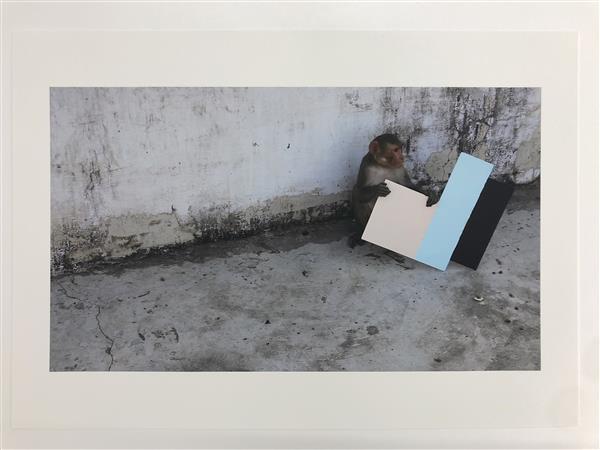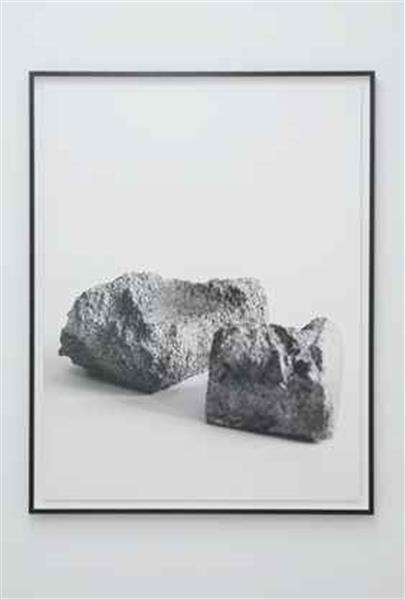Stimuli (film still)
Kay Walkowiak
archival pigment print on Fine Art Photo Rag
edition 2/6 + 2 AP
33 × 48 cm
2014
Donation 2017
Inv. No. 0338
The monkey has been an allegory in art since the Renaissance. “Ars simia naturae” – art is the ape of nature. The visualization of this Latin phrase is, for example, in a painting by Giovanni Bellini in the Brera in Milan. A monkey sits on a pedestal in the background of the painting on which the artist has inscribed his signature.
Since the 1950s there have been attempts to test simian creativity, since the time that tachism and abstract painting demolished the laws of form, and artistic creativity was suspected of loss of control and happy-go-lucky spontaneity. In Kay Walkowiakʼs film Stimuli, egret monkeys are confronted with minimalistic objects. They gnaw on the blue, grey, or pink colored boards, use them as playthings, turn or rotate them, or flee with their pickings. “The viewer”, writes Walkowiak, “can observe how they cautiously approach the four different minimalistically painted, flat colored objects and also how they immediately and instinctively take possession of the works.” Traditionally, minimalism is seen as a means to achieve distance. The aesthetic of reduction seems to touch on rationality and an aptitude for analysis, which is why these types of art are held to be contrary to immediate and carefree experience. And yet the monkeyʼs naive interaction with the material shows us otherwise.
Thomas D. Trummer, 2015 (translation: Virginia Dellenbaugh)
Continue readingPublications
Kay Walkowiak. Forms in Time, Vienna 2016, p. 156–157
evn collection. 95–2015 Jubilee, Vienna 2015, p. 363–367

